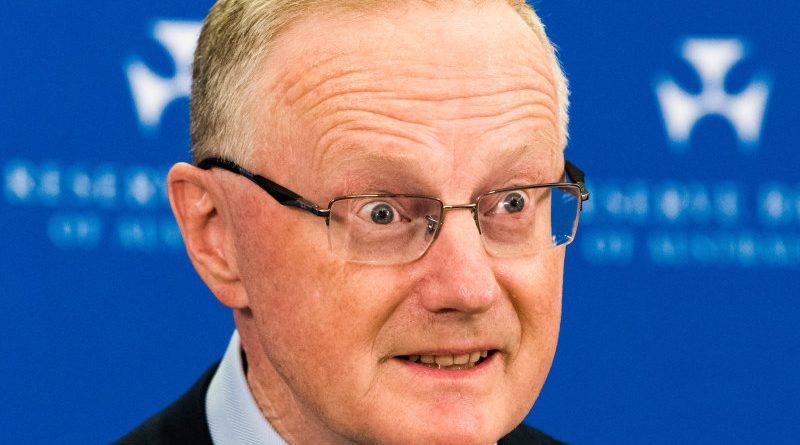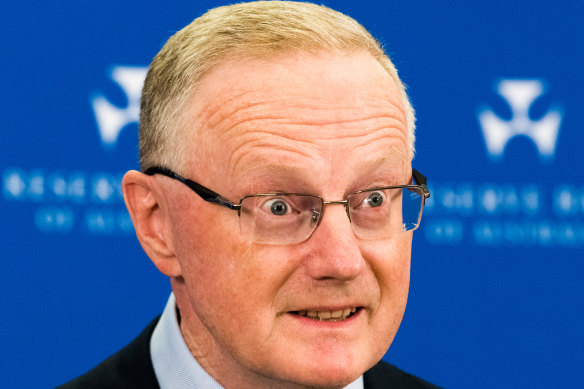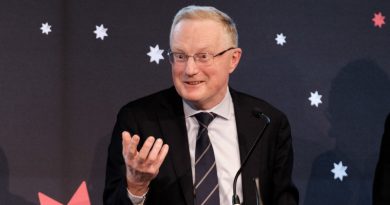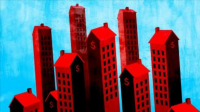Surprise! We’ve borrowed too much for unexpected rate hikes
Save articles for later
Add articles to your saved list and come back to them any time.
Surprise, surprise! Both the markets and economists were very surprised when the Reserve Bank raised interest rates yesterday. And that’s the problem right off the bat. Australians have never borrowed more, and interest rates haven’t risen this fast in many decades. So the decisions of the RBA have never mattered as much to Australian families and businesses as they do today, and surprises are most unwelcome.
Surprise!Credit: James Brickwood
In fact, the Reserve is so vital to so much and so many these days that the recent RBA review spent a lot of time saying it should communicate rather better than it has been, including holding more press conferences and giving more speeches. That probably came as no great surprise given the furious debate over whether RBA governor Philip Lowe did or didn’t rule out rate hikes until 2024. Clearer communication seems like little to ask in such circumstances.
But if the RBA was communicating better, then yesterday’s unexpected decision shouldn’t have been unexpected at all. And, either way, the central bank should have held a press conference immediately after that decision to explain what was behind the decision what they expect next.
Besides, there’s a pattern here. The Reserve surprised people in February with a statement suggesting a bunch of rate rises ahead. But just a month later they’d already calmed on the outlook, and then by last month – just like Ross and Rachel in Friends – they revealed they were on a break “to provide additional time to assess the state of the economy and the outlook”.
So the return of rate rises just a month after taking that break suggests that, um, there’s still some work for the RBA to do on the communication front.
Then again, perhaps that shouldn’t be a shock. Ahead of COVID I argued the Reserve had ”all the communication skills of a teaspoon”.
That makes it typical. Alan Greenspan, when head of the US central bank, once told a business audience, “If you think I’ve made myself clear, then you must have misunderstood me”.
Central bankers love to be mysterious. But Australians can and should expect better communication than they’re getting from our RBA. Mysterious doesn’t cut it any more.
So, why did the Reserve Bank raise rates?
It wasn’t because house prices have started to rise again. The recent review chipped the bank for worrying too much about things like house prices. The RBA hiked partly because inflation keeps spreading into new corners of the economy. That worries the Bank that its fight against inflation may linger for longer.
Partly they did it because the “wonderful news” in job markets – where unemployment remains close to its lowest in half a century – has them nervous. Why nervous? The RBA has consistently feared that low unemployment would set off faster wage growth, and that means prices would start to chase wages, and then wages would then chase prices. (To be clear, that hasn’t been a problem to date, and it doesn’t look to me like becoming a problem. Still, it is what it is, and the Bank’s nerves on that front are part of the story here.)
And partly the Reserve raised rates because population growth is roaring. No, population wasn’t mentioned in the RBA’s statement made after it raised rates. But in a speech a month ago, the central bank’s governor said the current surge in population was pushing up rent – and rents are an increasing driver of inflation.
Given that was already worrying the RBA a month ago, it will have noticed last week’s announcement by the government that population growth will be even faster than earlier thought. (Population growth ultimately has no impact on inflation. It’s just that its immediate impact does add to prices.)
You’ll be glad to hear that there may also be some good news among these less-than-happy surprises. The rate rise might have surprised most, but it also is increasingly likely that the RBA is now done and dusted with raising rates.
In part that’s because the fight against inflation is a global one, and the news from the rest of the world suggests that the battle is being won. The cost of the stuff that Australia imports is falling, especially energy costs.
And in part it’s because a growing share of Australia’s inflation is in areas where governments can do more than the Reserve and its interest rates can anyway (such as electricity prices, health and education costs).
True, the RBA is keeping some wriggle room on the interest rate front, saying that what happens next “will depend on how the economy and inflation evolve”.
So, there are no guarantees. But Ross and Rachel got their happy ending, and maybe the next move on interest rate rises will be that there isn’t another move at all. I wouldn’t be surprised if that were the case.
The Opinion newsletter is a weekly wrap of views that will challenge, champion and inform your own. Sign up here.
Most Viewed in Business
From our partners
Source: Read Full Article




